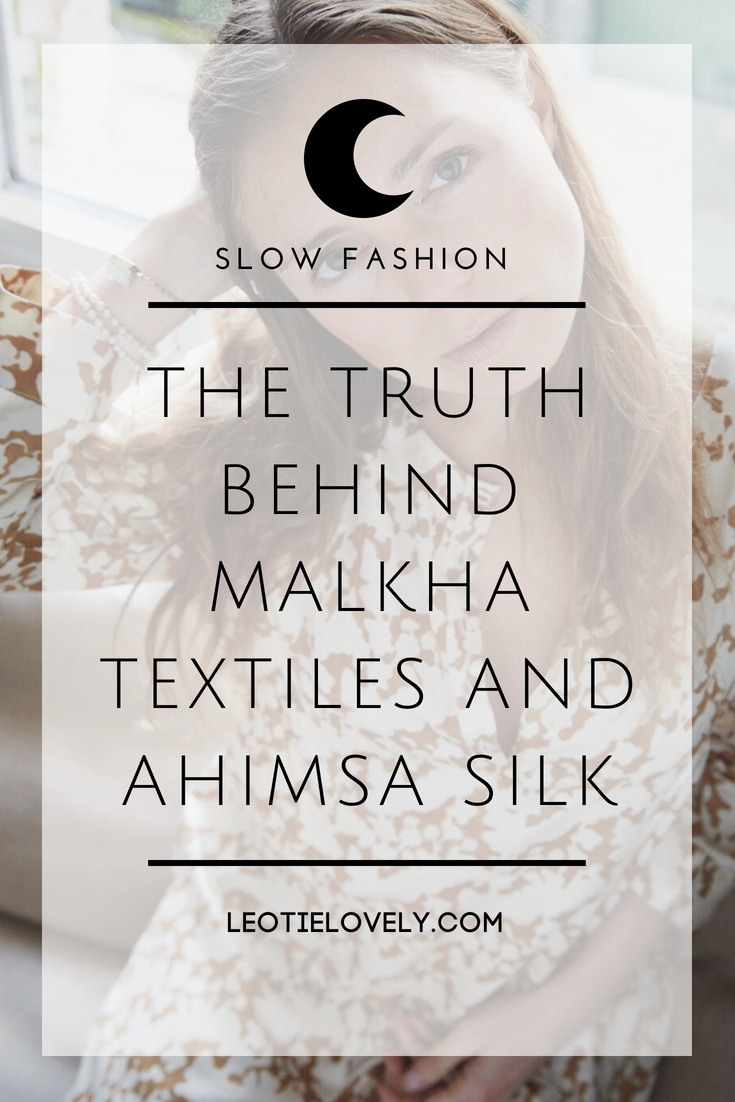On top of protecting against the ghettoization of the worker and the pollution of nature as the norm, the Malkha way of making cotton cloth protects artisan skills. It offers for the first time in modern history, yarn specifically made for the handloom to rid the artisanal textile chain of its dependence on large spinning mills that distort the small-scale, village-based nature of handloom clothing. This allows people to work rurally, connecting the entire process, allowing the farmer, ginner, spinner, and dyer to live in the same area and keeps workers near their homes rather than in the ghettos which surround the powerloom textile hubs.
The second fabric is Ahimsa silk, which is what the beautiful EMMA DRESS you see in these photos is made of. It is known as peace silk and is a type of silk that is made in a fashion that is more humane to the creatures creating the silk than many traditional methodologies. Ahimsa comes from the Sanskrit language and translates to non-violence.
The process of creating silk humanely begins in one of two ways: either the pupa hatches and the leftover cocoon is then used to create silk, or the cocoon may be cut open, achieving much the same result but often saving the resultant material from contamination by urine from the hatching moth. Each cocoon is checked individually to ensure that the moth has escaped before the silk thread is spun. Spinning takes around two months and weaving another month. This is not a material that can be used by fast fashion producers, much like Alpaca, it is a slow fashion fiber that can only be created properly by people who are in the business as compassionate problem solvers rather than callous profit mongers.




Leave a Reply